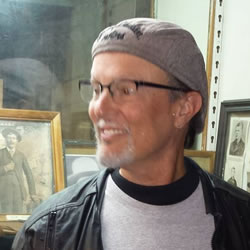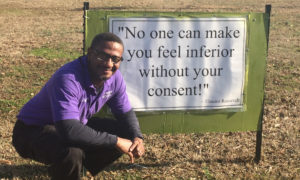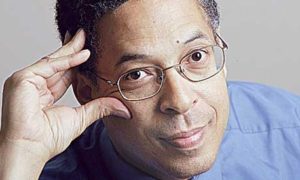News
Remembering the Greatest
Photography: Glen Abbott
Muhammad Ali’s boyhood home in Louisville, Kentucky opened for public tours two months ago. It’s a pastel pink house where the boxing great practiced shadowboxing long before he became a household name. In TheVillage we thought you would enjoy revisiting Muhammad Ali’s museum as fans all over the world pay their respects to an American icon who created a timeless legacy by “keeping it 100”.
At the Muhammad Ali Center, context is everything.
If you come here expecting simply a boxing museum, you might be disappointed. “You’ll find Muhammad Ali was much more than a boxer,” museum communications associate Casey Harden explains. “He was a man who stood by his convictions no matter what. He stood up for what he believed in. It’s a very humbling exhibit, and you’ll find he was a very humble man.”
The sixties was a time of vast societal upheaval. The Vietnam War raged, protest rallies engulfed the country, and figures like Malcolm X and Dr. Martin Luther King emerged as leaders in the struggle for civil rights.
At the same time, a young boxer by the name of Muhammad Ali was making a name for himself. Born Cassius Clay on January 17, 1942 in Louisville, Kentucky, the boxer changed his name upon joining the Nation of Islam in 1964, rejecting what he referred to as his “slave name.”
Ali exploded into the spotlight after winning a gold medal in the 1960 Rome Olympics, turned professional, and went on to win three World Heavyweight Champion boxing titles during the 1960s and 1970s.
His career ascent coincided with boxing’s “Golden Age,” and his bouts had colorful names, such as “Rumble in the Jungle” (Zaire, 1974), and “The Thrilla in Manila” (Philippines, 1975). The boxer was known for his poetic taunting of opponents and bombastic self-promotion (“Float like a butterfly, sting like a bee,” for example).
Ali became an almost larger than life character, known as “The Greatest,” arguably one of the most famous athletes of all time. His opposition to the Vietnam War brought public controversy, and his refusal to be drafted in 1967 led to his arrest and conviction for draft evasion and the loss of his boxing title (the U.S. Supreme Court reversed the conviction in 1971).
He retired from boxing in 1981, was subsequently diagnosed with Parkinson’s disease in 1984, and has continued to do humanitarian and charity work throughout the world.
The Muhammad Ali Center opened in 2005 in downtown Louisville as an educational and cultural center based upon the six core principals of Mr. Ali: respect, confidence, conviction, dedication, spirituality, and giving. The museum’s exhibits provide historical subtext and context to the turbulent times and important figures during which the boxer came of age, touching upon the Civil Rights movement, the Vietnam War, Malcom X, Martin Luther King, Jr., Robert Kennedy, and others.
And although it’s not just a boxing museum, you’ll find plenty of memorabilia on display, from the “People’s Choice” boxing robe given to the Champ by Elvis Presley, to the replacement gold medal given to Ali at the 1996 Summer Olympics.
“It’s a place where you can discover your own core values,” says the museum’s Casey Harden, “and use them to become the greatest in whatever you do.”
About the museum:
Muhammad Ali Center
144 N. Sixth St.
Louisville, KY 40202
502-584-9254
http://alicenter.org
Hours:
Tuesday-Saturday: 9:30 am – 5:00 pm
Sunday: Noon – 5:00 pm
Monday: Closed
Admission:
$9 – Adults
$8 – Seniors
$5 – Military
$4 – Children 6-12
$7 – Groups of 20 or more (per person)

-

 Featured10 months ago
Featured10 months agoCalifornia Is the First State to Create A Public Alert for Missing Black Youth
-

 Featured10 months ago
Featured10 months agoAfrican American Leaders Stay the Course Amid Calls for President Biden To Bow Out of Race
-

 Featured10 months ago
Featured10 months agoThe Debate Fallout Lands on Both Candidates
-

 Featured9 months ago
Featured9 months agoPresident Joe Biden Decides to Withdraw from the Presidential Race
-

 Featured9 months ago
Featured9 months agoIn One of His Final Speeches as President, Biden Says It’s Time for ‘Fresh Voices’
-

 Featured10 months ago
Featured10 months agoPresident Joe Biden Describes Shooting of Donald Trump As ‘Sick’









